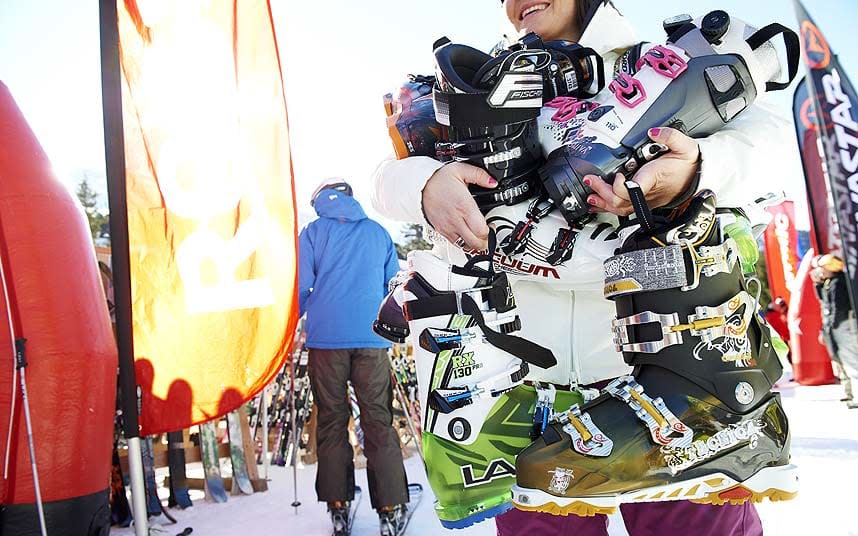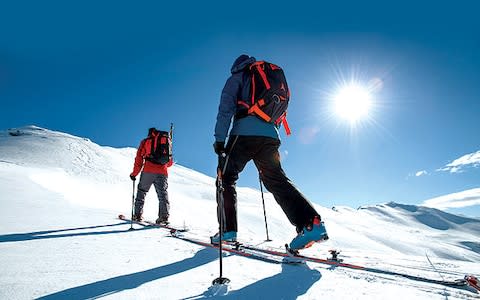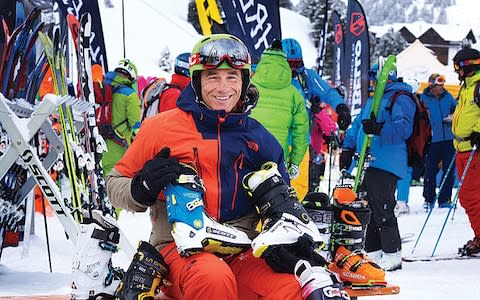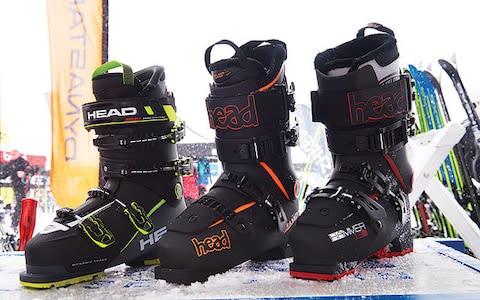Ski boots: everything you ever needed to know

From buying tips to FAQs to explanations of technical terms, here's our complete guide to ski boots. If you're ready to buy, check out this season's must-have ski boots for men and our pick of the best boots for women.
Ski boot FAQs
Why would I need a professional boot fitter?
When it comes to getting the right boots, there are many factors to consider, such as how experienced you are, whether you prefer park, powder or piste, your weight and your goals. A professional boot fitter will assess your foot shape and discuss your requirements to find boots with the right fit, flex and performance to suit your riding style and skills.
Should I get my liners heat moulded?
It is especially useful for skiers. The benefit of having mouldable liners is that they can be heated and then shaped to your feet by a boot fitter to give a custom fit. Moulding also helps to speed up the breaking-in process.
Do I need specialist footbeds/insoles?
Some boots come with customisable footbeds or insoles, or they can be added to your boots. While this can increase the cost, they’re designed to provide extra support, reduce fatigue, increase impact absorption and improve posture, making turning easier, so are worth the extra outlay. They’re particularly important for those who suffer from specific problems such as flat feet.

Is it worth getting fully customised ski boots?
Yes, because they’ll be much more comfortable. Expert fitters can customise or alter boots so they fit perfectly with no pressure points, by pushing out, grinding or cutting the shells, stretching the liners or adding foam inserts to cushion loose-fitting areas. The latest game-changing technology is fully thermo-mouldable shells, which can often be customised more quickly than traditional boots.
What are hike and ride boots?
Traditional ski boots have a fixed cuff with a limited range of motion in the ankle, whereas hike and ride boots have a hike mode that allows greater articulation in this area when walking. Used in conjunction with touring bindings this makes trekking uphill easier. And when locked into ski mode, hike and ride boots still provide impressive downhill performance.
What’s the difference between intermediate and expert ski boots?
Expert boots have thinner, firmer liners than intermediate models for a more precise fit and better edge control. Although comfort is sacrificed a little, this can be improved. Most liners nowadays can be heated and shaped to your feet, and some can be injected with foam for a more customised fit.
Ski boot buying tips
Trust your fitter
Use a specialist retailer and allow staff to guide you as to the best model and size. Be prepared to try a few pairs and don’t worry if they feel tighter than you’re used to – the lining will pack down over time.
Be honest
Don’t exaggerate your ability level, as you may end up with boots that are uncomfortable and could hinder your progress.

Forget fashion
Leave the Russell Brand-style skinny jeans at home. Instead, take some shorts or wear trousers that are loose enough to roll up above the knees. Remember to bring a pair of ski or snowboard socks to wear when trying on boots.
Speak up
If you’re unsure about anything during the fitting process, just ask. Your feedback is key to getting the right fit.
Ski boot jargon explained
Cabrio
A shell design in three pieces with an external tongue, favoured by freestylers for its smooth flex.
Canting
Adjustable canting allows boot fitters to alter boots in line with your legs. It can be done via a device on one (single) or both sides (double) of the cuffs.
Cuff
The upper part of the shell that wraps around the shin.
Flex
How stiff boots are when flexing forward. The softer the flex, the easier it is to get into the correct ski position. Boot flex is usually indicated by a number ranging from 50 to 150 – the flex index. The higher the number, the stiffer the boots.
Flex adjuster
Some boots have a switch for altering the flex to suit conditions. For example, stiffer on piste, softer off piste.

Last width
The last is a metal template around which the shell of boots is shaped. Last width is measured across the forefoot and indicates fit – up to 105mm is generous, less than 99mm is narrow. A snugger fit tends to mean more responsive boots.
Liner
Also known as inner boots.
Shell
The plastic outer part of boots, sometimes heat-mouldable to improve fit.
Ski/walk mode
On some boots, the cuff can be loosened via a switch for easy walking or hiking.
Tongue
Usually part of the liner, it might have extra pads to help protect shins.
Looking for snowboard boots? See our complete guide to snowboard boots.

